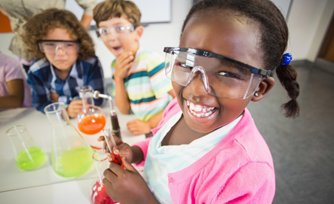
Social and Emotional Learning in the Time of COVID: Staying Physically Distanced but Emotionally Connected
There have been many obstacles to online learning during Covid from device allocation to connectivity issues to curriculum adjustments, but one facet of learning that has taken a backseat has been the social and emotional aspect of the students’ development.
Social-Emotional Learning (SEL) is the process through which children and adults acquire and effectively apply the knowledge, attitudes, and skills necessary to understand and manage emotions, set and achieve positive goals, feel and show empathy for others, establish and maintain positive relationships, and make responsible decisions. – The Collaborative for Academic, Social, and Emotional Learning (CASEL)
According to CASEL, a leading expert in SEL, science has shown that students who have been exposed to SEL have improved attitudes, positive classroom behavior, and do better on achievement tests. They are also less likely to have conduct problems or emotional distress.
Many teachers and administrators have been loosely implementing SEL in schools for quite some time. Student and teacher physical interaction provides a baseline emotional support that can be meaningful and long-lasting. As Dr. Scott Cascone, superintendent of the West Orange, NJ school district said “most teachers are nurturers.” To become more intentional about SEL, many school districts have embraced mindfulness. Lani Rosen, a mindfulness expert, has been providing training and support to schools in CT for the past several years. Dr. Cascone also instituted a Mindful Minute program, courtesy of Yoga Playhouse, during the Spring lockdown where he would work through a mindfulness exercise online to students once a week.
However, systematic SEL integration has not always been at the forefront, as academic achievement has taken priority. Dr. Cascone says that what they “have failed to do, almost across the board, is to have a fidelity to systemically changing our school districts to (support mental and emotional health).”
As students abruptly moved from in-person to online learning last Spring, the school “machine” was reimagined. This has allowed some schools to refocus on SEL since it may be what is lacking most in this new model, especially when both teachers and students may be experiencing higher stress levels, death of loved ones, and anxiety about the future. “When we opened our school (in September), we didn’t start with content, we started where the kids were coming from and what they were bringing to the table and being mindful of that,” said Dr. Cascone.
Teacher engagement and training are critical for this kind of work as well as encouraging their self-care and mental health. Dr. Cascone said that they “…wanted to start from a place of stability and security recognizing that if people were stressed and worried and in fear, how could we possibly begin this school year on the right foot.”
While the desire to incorporate SEL is there, and schools are focusing on student and teacher mental well-being, Dr. Cascone believes there still needs to be a systemic shift for long-term success, as follows:
- Build organizational capacity to understand what SEL is.
- Conduct a needs assessment to identify where they are falling short.
- Develop goals for how to address those shortcomings.
- Identify a curriculum.
- Engage parents and the community.
“Interlocking spheres of influence are necessary. This change cannot just exist within the walls of the school. It needs to be a community effort and ensure the parents are involved as well so we can call work synergistically.”
And once a program is implemented, how can one determine its effectiveness? Melissa Schlinger, VP of Programs and Practice at CASEL, thinks that assessing SEL could be useful if done at an institution level, to determine areas of focus, but should not be used for individual remediation. Overall success shows up differently at different developmental stages but, generally, can be seen in improved attendance, fewer disciplinary issues, better engagement, and- in the upper grades- higher graduation rates.
It’s also important to remember that SEL is always evolving to address our changing world. Ms. Schlinger outlined several areas of improvement that are needed as SEL continues to take center stage:
- More focus should be put on integrating SEL into academic subjects. For example, how to integrate SEL into Math, Science, Social Studies, etc.
- Cultural competence and sensitivity is also an area of improvement, an example of one program that does a good job of this is Facing History and Ourselves.
- Better professional development and training as well as a focus on SEL for adults.
The goal of highlighting Social Emotional Learning is to promote a holistic approach to teaching and learning. As Dr. Cascone said, “We retrofit SEL into an existing system when this needs to be the core of what we do; the lens through which we view everything. It must be a top priority above everything else on an ongoing basis”.
Some existing tools, reviewed by CASEL, include:
Lions Quest, Skills for Adolescence
Responding in Peaceful and Positive Ways
A Chance in the World Integrated SEL Curriculum
Social-Emotional Learning in Open Court Reading
Note: Information for this blog was taken from a webinar hosted by Aptara with the same name.






No Comments